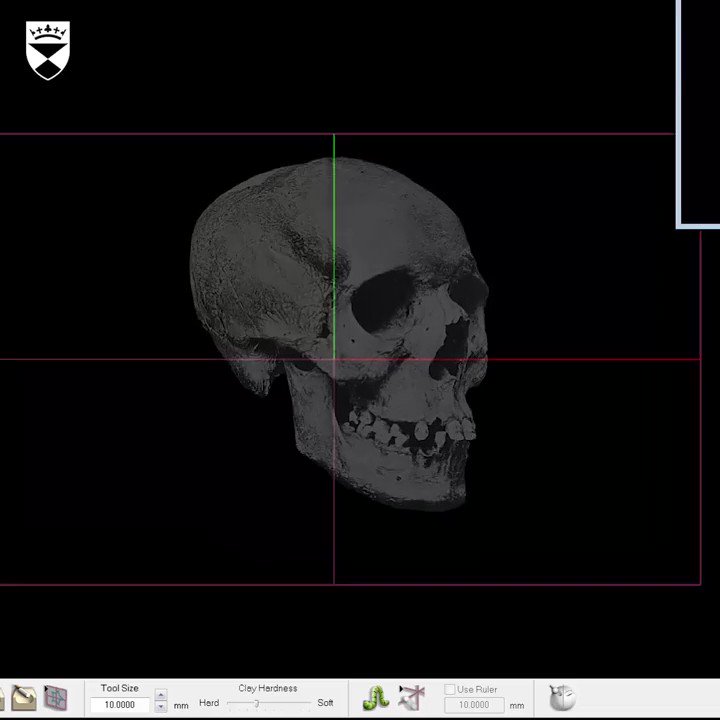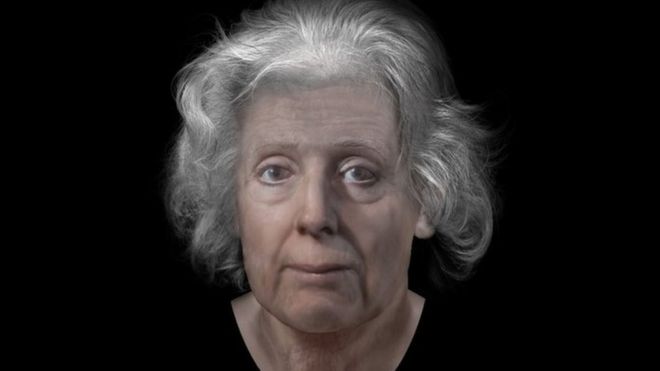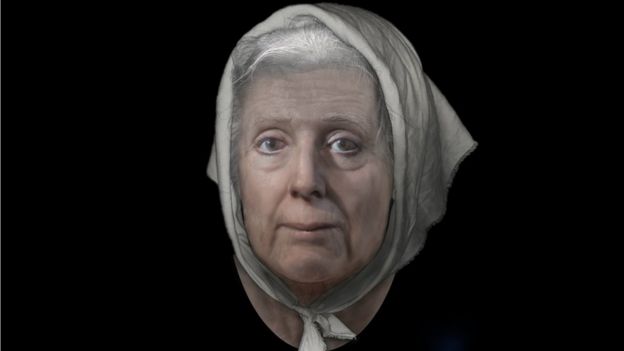
A medical examiner recently reconstructed the face of Lilias Adie, a witch, who died in the early eighteenth century. A real technological feat ...
Discovered buried under a large stone in Fife, a coastal region of eastern Scotland (located between the estuaries of the Forth and Tay), the bones of Lilias Adie have long interested researchers; and for good reason. This woman, imprisoned in Scotland in the early eighteenth century, would have "confessed" to be a witch. Unfortunately, born late seventeenth century, Lilias died in prison in 1704, before his death sentence by burning can be done.
Today, Dr. Christopher Rynn, artist and medical examiner at the Center for Anatomy and Human Identification at the University of Dundee in Scotland has delivered a real technological feat. Indeed, with the help of several photographs of the skull of this "witch", Christopher managed to reconstitute in 3D the face of this woman.
Witch: the resurrection of Lilias Adie
When questioned, he says, "There was nothing in Lilias' story that suggested that this woman was considered anything but a human being, a victim of horrible circumstances. So, I saw no reason to create his face with an unpleasant or nasty expression. Anyway, his face was created naturally and simply, in an expression of kindness.
Susan Morrison, a presenter at BBC Radio Scotland, says, "When the reconstruction of Lilias' face was over, it was a really strange and scary moment. We can see and look at the face of a woman we could talk to. Even if we know her story, and know that this woman was a victim, it's hard to look at her in the eye. "
Note that at the time, most of the alleged witches were burned alive on the log, rather than being buried.


Image caption Lilias Adie died in prison in 1704
The face of a Scottish woman persecuted for witchcraft more than 300 years ago has been reconstructed by forensic scientists.
Lilias Adie died in 1704 in prison before she could be burned for her "confessed" crimes of being a witch and having sex with the devil.
Locals buried her under a large stone on the Fife coast, perhaps believing it would stop her rising from the grave.
Her remains were exhumed in the 19th Century by antiquarians.
Her skull ended up in the St Andrews University Museum and was photographed before it went missing during the 20th Century.
BBC Radio Scotland's Time Travels programme and its historian Louise Yeoman wondered if it would be possible to make a digital reconstruction of Lilias Adie's face from the photographs alone.

Image caption Dr Christopher Rynn used state-of-the-art 3D virtual sculpture for the reconstruction
Forensic artist Dr Christopher Rynn from Dundee University's Centre for Anatomy and Human Identification carried out the work using 3D virtual sculpture and forensic facial reconstruction methods.
He said: "There was nothing in Lilias' story that suggested to me that nowadays she would be considered as anything other than a victim of horrible circumstances.
"So I saw no reason to pull the face into an unpleasant or mean expression and she ended up having quite a kind face, quite naturally."
The project is a follow-up to a previous collaboration between the Radio Scotland History team and archaeologist Douglas Speirs, which identified the likely spot on the Fife coastline for Lilias Adie's grave.
Presenter Susan Morrison said: "It was a truly eerie moment when the face of Lilias suddenly appeared.
"Here was the face of a woman you could have a chat with, though knowing her story it was a wee bit difficult to look her in the eye."

Lilias Adie was tortured in prison and it is believed she may have taken her own life.
Louise Yeoman said: "I think she was a very clever and inventive person.
"The point of the interrogation and its cruelties was to get names.
"But Lilias said that she couldn't give the names of other women at the witches' gatherings as they were masked like gentlewomen.
"She only gave names which were already known and kept up coming up with good reasons for not identifying other women for this horrendous treatment."
Burials of suspected witches were unusual as their bodies were usually burned to ashes at the stake.
It was feared the devil could steal such corpses and animate them to torment the living, which may explain why the stone slab was placed over the grave.
Face of 1704 'witch' reconstructed
Le visage d'une sorcière morte au XVIIIe siècle reconstitué - DocuMystere : Paranormal et mystères du monde
